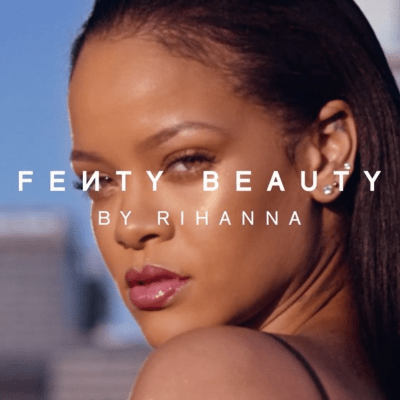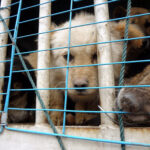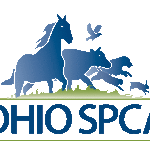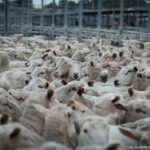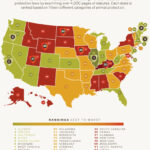In the realm of beauty and cosmetics, the ethical considerations surrounding product testing and ingredient sourcing are increasingly paramount. As consumers become more conscientious about the products they consume, the demand for cruelty-free beauty brands continues to ascend. One brand that has recently captured significant attention is Fenty Beauty, launched by global icon Rihanna. The question remains: is Fenty truly animal cruelty-free? To navigate this inquiry, one must delve into the intricacies of the brand’s practices and the broader implications they represent.
Fenty Beauty made its debut in September 2017 with an emphatic commitment to inclusivity. The brand was celebrated for its extensive range of foundation shades designed to cater to diverse skin tones—a commendable stride in an industry often critiqued for its narrow perspective on beauty. However, as discussions surrounding animal rights gain momentum, a closer examination of Fenty Beauty’s cruelty-free status reveals complexities that merit exploration.
In the cosmetic industry, “cruelty-free” denotes that a brand does not engage in animal testing for its products or ingredients. This practice has long been scrutinized, as countless animals suffer and die in the name of beauty. Fenty Beauty proclaims its products are cruelty-free, an assertion that appeals to the moral sensibilities of modern consumers. Nevertheless, the brand’s ownership by LVMH—an international conglomerate known for its multiple luxury brands—introduces an intricate layer to the narrative.
While Fenty Beauty itself actively promotes a cruelty-free ethos, LVMH has faced criticism for its testing policies in regions where animal testing is mandated by law—such as China. In the realm of multinational cosmetics, adherence to local regulations often means that some products endure animal testing despite a brand’s claims. This raises a salient point: can a brand genuinely be considered cruelty-free if it operates within a framework that allows for, or even necessitates, such testing? The ethical implications are profound, warranting a closer examination of what “cruelty-free” truly embodies within the beauty industry.
The juxtaposition of Fenty Beauty’s cruelty-free claims against LVMH’s marketing strategies illuminates a broader societal hypocrisy. Consumers often find themselves intertwined in a web of ethical dilemmas, where well-intended choices may inadvertently support systems that perpetuate animal suffering. Many individuals are blissfully unaware of the convoluted supply chains that underpin their favorite beauty products, leading to a poignant disconnect between consumer values and corporate practices. This duality spurs a deeper fascination with ethical beauty, as it challenges consumers to critically evaluate the authenticity of a brand’s commitment to animal welfare.
Rihanna, a formidable figure in the music and fashion industries, embodies a unique intersection of influence and responsibility. As a public figure, her decisions resonate beyond mere commercial interests; they encapsulate a cultural movement towards a more ethical consumption model. The allure of Fenty Beauty lies not only in its aesthetically pleasing products but also in the potential for social change that arises from wide-reaching brand visibility. Such visibility has the power to advocate for reform in testing practices and ingredient sourcing on a global scale.
To scrutinize the realm of cruelty-free beauty, one must acknowledge the complexities inherent in certification processes. Various organizations grant cruelty-free designations, each with unique criteria and frameworks that can lead to consumer confusion. The absence of a universal standard presents a conundrum; brands may claim cruelty-free status while still engaging in practices that contradict that designation. For example, it is crucial to examine whether a brand conducts post-production testing by third-party entities to meet specific market regulations. Fenty Beauty’s positioning within such regulatory landscapes challenges the clarity of its cruelty-free status.
Another crucial aspect to consider is the product formulation itself. Ingredients sourced from ethical farms that prioritize humane practices are vital for maintaining a cruelty-free standard. Transparency in sourcing and ingredient integrity is imperative for consumers who wish to align their purchases with their ethical values. Fenty Beauty has made strides toward greater ingredient transparency, partaking in the dialogue surrounding clean beauty; however, the extent to which all formulations are free from animal-derived ingredients remains an essential inquiry.
The paradox of modern consumerism is stark; with every purchase comes an accompanying moral choice. Fenty Beauty, while championing inclusivity and self-expression, must navigate the increasingly complex terrain of ethical responsibility. The exploration of its cruelty-free status transcends mere verification—it invites consumers to engage with the ethical implications of their choices actively. The fascination lies not solely in Fenty’s products but in the metamorphosis of a collective consciousness questioning the morality underpinning beauty standards.
In conclusion, the allure of Fenty Beauty speaks to a burgeoning demand for ethical consumption in the beauty industry. However, the intricate realities of corporate ownership, testing regulations, and ingredient sourcing complicate the narrative surrounding its cruelty-free claims. As consumers, assessing the authenticity of these claims necessitates a willingness to confront uncomfortable truths about the choices we make and the implications they bear. The dialogue surrounding Fenty Beauty and its ethical standing encapsulates a broader movement toward transparency and accountability, a testament to the potential influence of conscientious consumerism in reshaping industry standards. The pursuit of true cruelty-free beauty continues, and with it comes the hope for a more ethical future in the realm of cosmetics.
